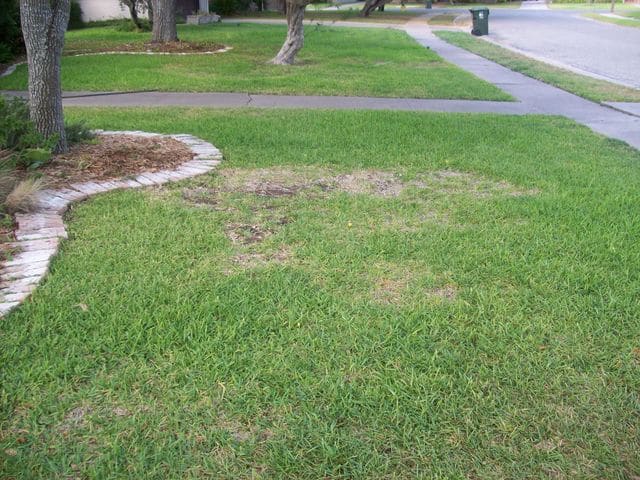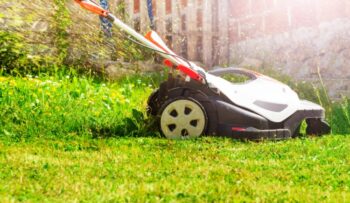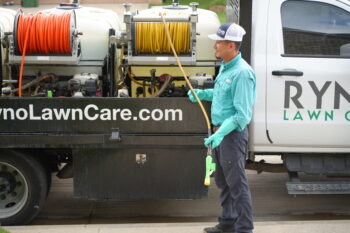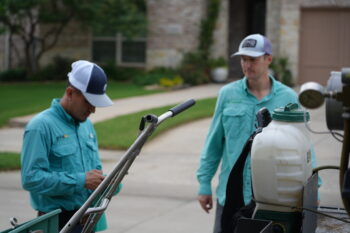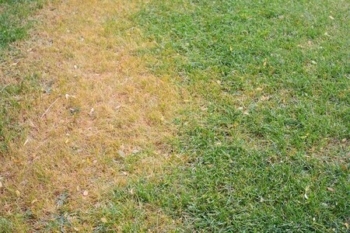 While fungus, mold, and other microbes are present in even the healthiest of yards, an excess can cause damaging and unsightly lawn disease. Fortunately, there are some fairly easy was to address and prevent this issue.
While fungus, mold, and other microbes are present in even the healthiest of yards, an excess can cause damaging and unsightly lawn disease. Fortunately, there are some fairly easy was to address and prevent this issue.
Many measure we are suggesting for lawn disease prevention are simply good practice for lawn and landscape maintenance. Ryno Lawn Care, LLC has a lot of Great Tips For Effective Lawn Care to offer. In this article, we’re going to take a look at the most critical things you can do to tackle lawn disease.
Smart Watering Practices
Organisms that cause lawn disease thrive in damp conditions, so it’s important to water your lawn at the right time. While some believe that watering at night is best for conservation, it’s not actually something we recommend. Watering early or mid-morning is best, for multiple reasons.
First off, a morning irrigation schedule side-steps the risk of water simply evaporating before it soaks in, on hot summer days. Secondly, it also your grass, thatch, and topsoil to dry off once the water has soaked in. Remember, disease-causing microbes will propagate an environment that remains moist for several hours.
Bear in mind, we are not implying that your soil should be as dry as possible! Once the water has submerged, your grass’s roots will get to work drinking it up. Its the moisture that’s just sitting on top that allows lawn disease to establish.
Landscape Issues
Speaking of excess moisture, low spots in your landscape can become a cesspool if they’re prone to collecting standing water. Not only is this situation a breeding ground for flies and mosquitoes, but it’s an ideal habitat for harmful microbes.
Survey your yard’s layout and make note of low spots that could be troublesome. Leveling your landscape could be that critical step that saves your lawn from unsightly infections, and it may be far easier to remedy than you think.
If you’re needing professional help with your landscaping projects, click here for a free estimate!
Mowing Strategies
Most North Texas turf grass can handle a good bit of length on it. This not only provides a softer lawn for children and bare feet, but it also helps keep your yard healthy.
Instead of “scalping” your lawn, keep it cut to about 1-1.5 inches long. Shorter blades are more vulnerable to infection, and they provide less of a canopy for your thatch and topsoil. Trimming your grass a bit longer keeps the blades stronger and more resilient.
Effective Treatments
If you suspect that lawn disease has already set in, fungicide is the #1 go-to for successful treatment. There are a two different application methods from which to choose.
Systemic fungicide comes in a granular form that will dissolve into your soil. Be sure you apply it on dry turf, and water within 24 hours afterward. The roots will soak it in and it will begin killing the disease-causing microbes.
Contact fungicide, as a liquid, is applied topically. This is a good remedy for spot-treatment with mild infections, as it attacks the spores on the surface of your grass blades. However, for a more aggressive outbreak, you’ll want to utilize the systemic treatment.
Natural Remedies
For those who prefer avoiding store-bought chemical solutions, there are a few home-grown solutions that have shown to be effective. These options work best on smaller, more contained instances of lawn disease.
Neem oil is easily found at your local natural grocers, and it can be mixed with water in a spray bottle. Additionally, tea is a natural antimicrobial agent, so composting tea bags and adding them to problem areas is a great solution. Finally, baking soda (again, mixed with water) is known to effectively kill fungus.
Finally, sometimes the easiest solution is to let nature do its job. If you’ve noticed signs of lawn disease in late winter or early spring, you may not have to do anything at all! Rapidly rising temperatures will often kill off unwanted microbes, so long as you aren’t facing excessive precipitation.
Conclusion
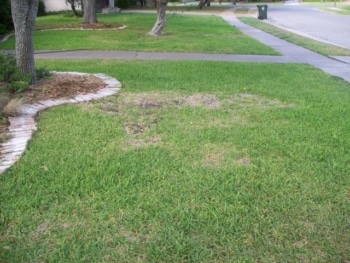 As we mentioned before, all lawns have a certain amount of fungus, mold, etc. lurking in the grass and topsoil. An otherwise healthy yard can easily fight off minor build-up in its natural tendency toward seeking a healthy homeostasis.
As we mentioned before, all lawns have a certain amount of fungus, mold, etc. lurking in the grass and topsoil. An otherwise healthy yard can easily fight off minor build-up in its natural tendency toward seeking a healthy homeostasis.
If you’re facing a serious infection, evidenced by dry patches that are yellow or brown, or a powdery coat on your grass blades, it’s time to take action. Utilize smart watering practices, mow a bit higher, look out for low spots in your terrain, and take advantage of the remedies we’ve discussed. Lawn disease is not always completely preventable, but it can be addressed fairly easily with the right knowledge and materials.

